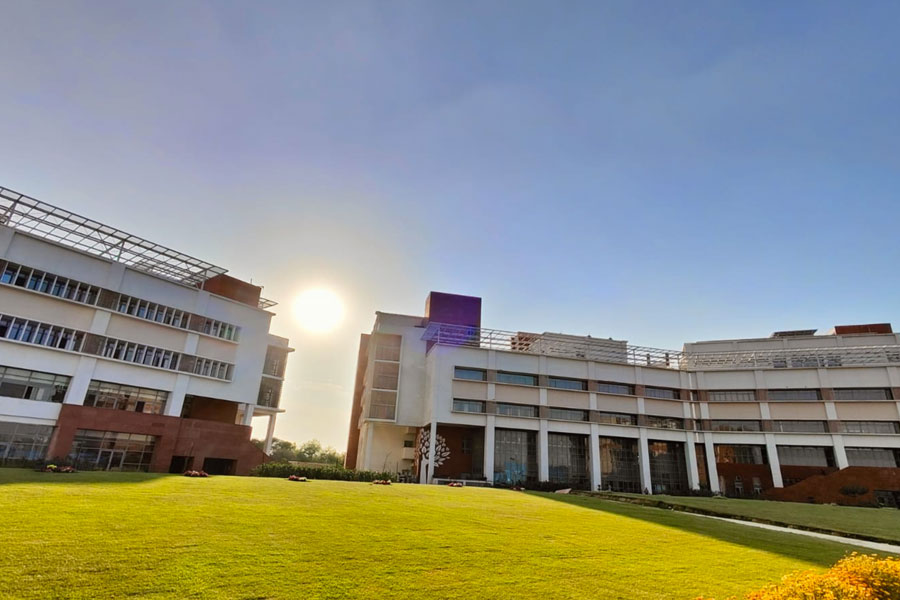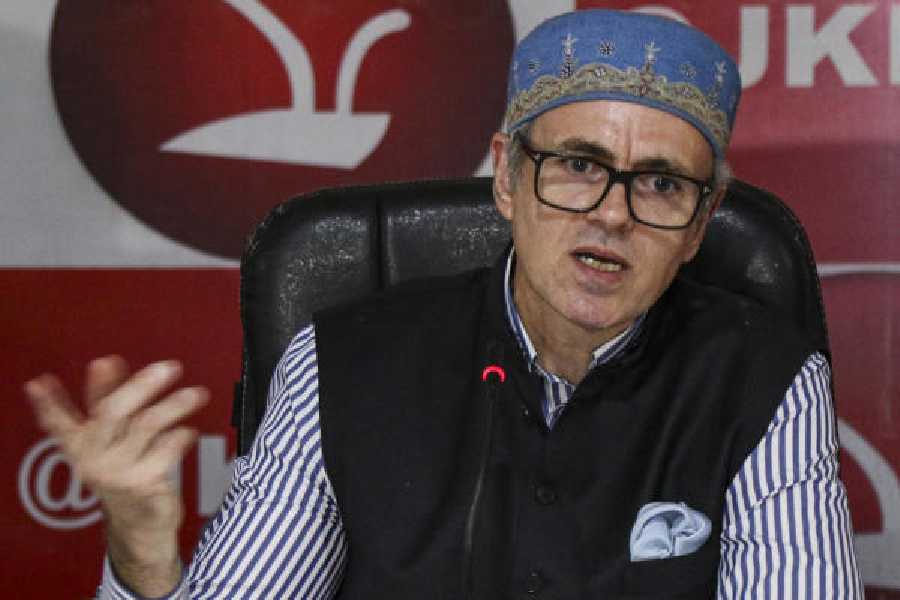March 28: An ambitious project is under way - the first of its kind in India - to preserve the architectural integrity of Le Corbusier's Chandigarh, whose Capitol complex was designated a Unesco World Heritage Site in 2016.
The project is being overseen by Abha Narain Lambah, the Mumbai-based conservation architect and heritage building consultant who was born in Calcutta and grew up in Ballygunge.
For Lambah, 46, who began her schooling at Loreto House and moved out of the city after 10 years, Calcutta means the Lily Pool of the Acharya Jagadish Chandra Bose Indian Botanic Garden in Howrah.
Chandigarh, the embodiment of Jawaharlal Nehru's concept of a new India, is the only site of modernism in India acknowledged internationally. It shows signs of wear and tear and depreciation 67 years since the Swiss-French visionary and planner, Le Corbusier, signed a contract in 1950 with the Indian government to act as architectural adviser on the plan for this capital city for Punjab that would compensate for the loss of Lahore after Partition.
The current project is focused on the Capitol complex, which was conceived in its entirety by Corbusier, and comprises a conglomeration of reinforced concrete buildings, including the three masterpieces - the Legislative Assembly, Secretariat and the High Court of Punjab and Haryana - and other monuments.

The Assembly is considered one of the greatest buildings of 20th century. With the Shivalik hills as the backdrop of the Capitol complex, the high court was the first building to be completed and opened in 1955, followed by the Secretariat, which was ready in 1958. The Assembly was completed in 1962 and opened in 1964.
"Till the 1970s and 1980s, there was very little understanding of architecture. In the last decade the Union Territory of Chandigarh has become conscious of its heritage," Lambah tells Metro over the phone.
Corbusier is the only character here. Celebrating the designs of Corbusier in their own countries, Argentina, Belgium, France, Germany, India, Japan and Switzerland jointly nominated Chandigarh a World Heritage Site. It is an important contribution to the modern map. "It is time for Indians to realise that this is also our heritage," Lambah avers.
Calcutta and Mumbai were both "created cities" and represent a certain "sense of urbanity". At the other end of the spectrum is Chandigarh, which was barren land and was envisioned as part of new India. They are like two bookends - representing, respectively, the end of the Mughal empire up to the British Raj, and the end British rule and the emergence of Nehru's vision.
Gandhi, she says, "hated cities. Nehru, on the other hand, stood up for the fact that new India needs new cities. It is a declaration of where we want to head." Lambah asserts: "Architecture is a political statement."
Neo-classical was the style for Calcutta. Similarly, Neo-Gothic was Mumbai built post-1857, in the thick of the Victorian age. By the 1950s, post-Independence, India was venturing out into the modern world, and a powerful architectural language was used to signify that.
But six decades later, Indian sensibilities and the ever-growing demand for space have visibly left their mark on these starkly grand and massive structures that were conceptualised as standalone pieces of abstract sculpture, often inspired by geometry. But makeshift measures that violated Corbusier's perfect planning have taken their toll on the complex.
Earlier, all the buildings were accessible. Now security is tight around all of them. Lambah's father was posted in Chandigarh in the 1980s, which saw the beginning of the Khalistan movement that led to strict security measures being put in place.
"All these buildings have a unique scenario. They were built for one state - Punjab. Now owing to political developments, Chandigarh is state capital to both Punjab and Haryana," says Lambah. The two states use the Assembly together. The Secretariat is vertically divided between the two. "Corbusier could never have anticipated this - this is what Indian juggad is all about," says Lambah.
Over five decades of weathering has affected the structures. There are issues of concrete, says Lambah, who studied conservation at the School of Planning and Architecture, Delhi, worked at the office of the American architect, Joseph Allen Stein, and rounded off her training in conservation by working at Lincoln Cathedral in the UK.
She has prepared the management plans for Ajanta caves and Bodhgaya, both Unesco World Heritage sites, and for Amer fort in Rajasthan. The core of her practice has been with living historic buildings like Bombay High Court, Bombay Municipal Corporation, Crawford market, JJ School of Arts, Royal Bombay Opera House, Asiatic Library and Nehru Memorial at Teen Murti, Delhi.
"Living buildings are more challenging," she comments.
Back to Chandigarh, Lambah says the weather there is far more favourable towards concrete than in Calcutta or Mumbai. Yet, discolouration and delamination are unavoidable.
Thanks to "intensive and severe use by the two states, the buildings have accumulated layers and layers of accretions. There are partitions where there was none before. Balconies with Corbusier's famous sun breaks are covered with glass and aluminium glazing. AC units stick out at odd places. Electrical cabling everywhere is in a mess. It is all ad hoc. Very similar to Writers' Buildings," says Lambah.
Unlike Writers', however, she will not have the luxury of restoring buildings which have been vacated. She started work on February 27 with a team of 12. "I have to work around people and have to work out a sequential system without disturbing the functioning of the building," says Lambah.
The building is not just grey concrete. There are splashes of colour all over and they are brought in through different media such as tiles and paint. Lambah says the process of documentation has not ended. There is tapestry inside. Each courtroom in the high court building is hung with tapestry designed by Corbusier.
Lambah consulted architect Charles Correa's widow, Monika, who weaves art tapestries. She recalled that when as a young bride she accompanied her husband to meet Corbusier, the master remarked on the beauty of her feet.
Within the next five months, tenders will be floated. She expects the project to take three years to complete. "The government is obligated to report back to the Unesco as to what steps it has taken," she adds.











